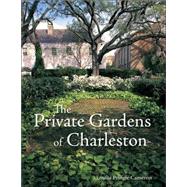
| Acknowledgements | p. xi |
| Introduction | p. xiii |
| The Garden of the James Huston House | p. 2 |
| The Courtyard of the Humphrey-Sommers House | p. 8 |
| The Garden of the Old Brewton Inn | p. 10 |
| An Atrium Garden | p. 12 |
| The Author's Garden | p. 14 |
| A Contemporary Courtyard | p. 20 |
| The Garden of the Thomas Rose House | p. 22 |
| A Small Colorful Garden | p. 28 |
| The Garden of the Simon Chancognie House | p. 30 |
| An Historic Garden Restoration | p. 34 |
| A Classical Garden | p. 36 |
| A Landscape Architect's Garden | p. 40 |
| A Palm Collector's Garden | p. 42 |
| The Garden of the Colonel William Rhett House | p. 46 |
| The Garden of the Colonel Isaac Motte House | p. 50 |
| The Garden of the Jenkins-Mikell House | p. 54 |
| The Garden of the William Gibbes House | p. 56 |
| The Garden of the Robert Trail Chisolm House | p. 60 |
| An Eighteenth-Century Garden | p. 64 |
| The Garden of the Benjamin Phillips House | p. 66 |
| The Garden of the Colonel Robert Brewton House | p. 72 |
| The Garden of the James Veree House | p. 76 |
| The Garden of the Timothy Ford House | p. 80 |
| A Garden in Ansonborough | p. 84 |
| Garden Glimpses | p. 88 |
| Suggested Reading | p. 93 |
| Botanical Nomenclature | p. 95 |
| Table of Contents provided by Ingram. All Rights Reserved. |
The New copy of this book will include any supplemental materials advertised. Please check the title of the book to determine if it should include any access cards, study guides, lab manuals, CDs, etc.
The Used, Rental and eBook copies of this book are not guaranteed to include any supplemental materials. Typically, only the book itself is included. This is true even if the title states it includes any access cards, study guides, lab manuals, CDs, etc.